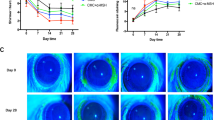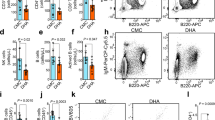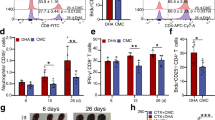Abstract
Artemisinin and its derivatives are the well-known anti-malarial drugs derived from a traditional Chinese medicine. In addition to antimalarial, artemisinin and its derivatives possess distinguished anti-cancer, anti-oxidant, anti-inflammatory and anti-viral activities, but the poor solubility and low bioavailability hinder their clinical application. In the last decades a series of new water-soluble and oil-soluble derivatives were synthesized. Among them, we have found a water-soluble derivative β-aminoarteether maleate (SM934) that exhibits outstanding suppression on lymphocytes proliferation in immunosuppressive capacity and cytotoxicity screening assays with 35-fold higher potency than dihydroartemisinin. SM934 displays significant therapeutic effects on various autoimmune and inflammatory diseases, including systemic lupus erythematosus, antiphospholipid syndrome nephropathy, membranous nephropathy, rheumatoid arthritis, multiple sclerosis, inflammatory bowel disease, and dry eye disease. Here, we summarize the immunomodulatory effects, anti-inflammatory, anti-oxidative and anti-fibrosis activities of SM934 in disease-relevant animal models and present the probable pharmacological mechanisms involved in its therapeutic efficacy. This review also delineates a typical example of natural product-based drug discovery, which might further vitalize natural product exploration and development in pharmacotherapy.
Similar content being viewed by others
Log in or create a free account to read this content
Gain free access to this article, as well as selected content from this journal and more on nature.com
or
References
Ma N, Zhang Z, Liao F, Jiang T, Tu Y. The birth of artemisinin. Pharmacol Ther. 2020;216:107658.
Mancuso RI, Foglio MA, Olalla Saad ST. Artemisinin-type drugs for the treatment of hematological malignancies. Cancer Chemother Pharmacol. 2021;87:1–22.
Kiani BH, Kayani WK, Khayam AU, Dilshad E, Ismail H, Mirza B. Artemisinin and its derivatives: A promising cancer therapy. Mol Biol Rep. 2020;47:6321–36.
Greish K. Recent and future advances in anticancer drug delivery: An interview with khaled greish. Ther Deliv. 2018;9:409–12.
Ho WE, Peh HY, Chan TK, Wong WS. Artemisinins: Pharmacological actions beyond anti-malarial. Pharmacol Ther. 2014;142:126–39.
Efferth T, Oesch F. The immunosuppressive activity of artemisinin-type drugs towards inflammatory and autoimmune diseases. Med Res Rev. 2021;41:3023–61.
Feng FB, Qiu HY. Effects of artesunate on chondrocyte proliferation, apoptosis and autophagy through the PI3K/AKT/mTOR signaling pathway in rat models with rheumatoid arthritis. Biomed Pharmacother. 2018;102:1209–20.
He Y, Fan J, Lin H, Yang X, Ye Y, Liang L, et al. The anti-malaria agent artesunate inhibits expression of vascular endothelial growth factor and hypoxia-inducible factor-1alpha in human rheumatoid arthritis fibroblast-like synoviocyte. Rheumatol Int. 2011;31:53–60.
Wan Q, Chen H, Xiong G, Jiao R, Liu Y, Li X, et al. Artesunate protects against surgery-induced knee arthrofibrosis by activating beclin-1-mediated autophagy via inhibition of mTOR signaling. Eur J Pharmacol. 2019;854:149–58.
Ravindra KC, Ho WE, Cheng C, Godoy LC, Wishnok JS, Ong CN, et al. Untargeted proteomics and systems-based mechanistic investigation of artesunate in human bronchial epithelial cells. Chem Res Toxicol. 2015;28:1903–13.
Zhao D, Zhang J, Xu G, Wang Q. Artesunate protects LPS-induced acute lung injury by inhibiting TLR4 expression and inducing Nrf2 activation. Inflammation. 2017;40:798–805.
Lee IS, Ryu DK, Lim J, Cho S, Kang BY, Choi HJ. Artesunate activates Nrf2 pathway-driven anti-inflammatory potential through erk signaling in microglial BV2 cells. Neurosci Lett. 2012;509:17–21.
Li D, Qi J, Wang J, Pan Y, Li J, Xia X, et al. Protective effect of dihydroartemisinin in inhibiting senescence of myeloid-derived suppressor cells from lupus mice via Nrf2/HO-1 pathway. Free Radic Biol Med. 2019;143:260–74.
Zhu H, Ji W. Dihydroartemisinin ameliorated ovalbumin-induced asthma in mice via regulation of mir-183c. Med Sci Monit. 2019;25:3804–14.
Zhao YG, Wang Y, Guo Z, Gu AD, Dan HC, Baldwin AS, et al. Dihydroartemisinin ameliorates inflammatory disease by its reciprocal effects on th and regulatory T cell function via modulating the mammalian target of rapamycin pathway. J Immunol. 2012;189:4417–25.
Okorji UP, Velagapudi R, El-Bakoush A, Fiebich BL, Olajide OA. Antimalarial drug artemether inhibits neuroinflammation in BV2 microglia through Nrf2-dependent mechanisms. Mol Neurobiol. 2016;53:6426–43.
German PI, Aweeka FT. Clinical pharmacology of artemisinin-based combination therapies. Clin Pharmacokinet. 2008;47:91–102.
Sugiarto SR, Moore BR, Makani J, Davis TME. Artemisinin therapy for malaria in hemoglobinopathies: A systematic review. Clin Infect Dis. 2018;66:799–804.
Yang ZS, Zhou WL, Sui Y, Wang JX, Wu JM, Zhou Y, et al. Synthesis and immunosuppressive activity of new artemisinin derivatives. 1. [12(beta or alpha)-dihydroartemisininoxy]phen(ox)yl aliphatic acids and esters. J Med Chem. 2005;48:4608–17.
Yang ZS, Wang JX, Zhou Y, Zuo JP, Li Y. Synthesis and immunosuppressive activity of new artemisinin derivatives. Part 2: 2-[12(beta or alpha)-dihydroartemisinoxymethyl (or 1’-ethyl)]phenoxyl propionic acids and esters. Bioorg Med Chem. 2006;14:8043–9.
Hou LF, He SJ, Wang JX, Yang Y, Zhu FH, Zhou Y, et al. SM934, a water-soluble derivative of arteminisin, exerts immunosuppressive functions in vitro and in vivo. Int Immunopharmacol. 2009;9:1509–17.
Hou LF, He SJ, Li X, Wan CP, Yang Y, Zhang XH, et al. SM934 treated lupus-prone nzb x nzw f1 mice by enhancing macrophage interleukin-10 production and suppressing pathogenic T cell development. PLoS One. 2012;7:e32424.
Hou LF, He SJ, Li X, Yang Y, He PL, Zhou Y, et al. Oral administration of artemisinin analog SM934 ameliorates lupus syndromes in MRL/LPR mice by inhibiting Th1 and Th17 cell responses. Arthritis Rheum. 2011;63:2445–55.
Li X, Li TT, Zhang XH, Hou LF, Yang XQ, Zhu FH, et al. Artemisinin analogue SM934 ameliorates murine experimental autoimmune encephalomyelitis through enhancing the expansion and functions of regulatory t cell. PLoS One. 2013;8:e74108.
Lin ZM, Yang XQ, Zhu FH, He SJ, Tang W, Zuo JP. Artemisinin analogue SM934 attenuate collagen-induced arthritis by suppressing T follicular helper cells and T helper 17 cells. Sci Rep. 2016;6:38115.
Wu Y, He S, Bai B, Zhang L, Xue L, Lin Z, et al. Therapeutic effects of the artemisinin analog SM934 on lupus-prone MRL/LPR mice via inhibition of TLR-triggered b-cell activation and plasma cell formation. Cell Mol Immunol. 2016;13:379–90.
Bolouri N, Akhtari M, Farhadi E, Mansouri R, Faezi ST, Jamshidi A, et al. Role of the innate and adaptive immune responses in the pathogenesis of systemic lupus erythematosus. Inflamm Res. 2022;71:537–54.
Kiriakidou M, Ching CL. Systemic lupus erythematosus. Ann Intern Med. 2020;172:ITC81–ITC96.
Lu L. Study on effect of cordyceps sinensis and artemisinin in preventing recurrence of lupus nephritis. Zhongguo Zhong Xi Yi Jie He Za Zhi. 2002;22:169–71.
Liang N, Zhong Y, Zhou J, Liu B, Lu R, Guan Y, et al. Immunosuppressive effects of hydroxychloroquine and artemisinin combination therapy via the nuclear factor-kappab signaling pathway in lupus nephritis mice. Exp Ther Med. 2018;15:2436–42.
Wu X, Zhang W, Shi X, An P, Sun W, Wang Z. Therapeutic effect of artemisinin on lupus nephritis mice and its mechanisms. Acta Biochim Biophys Sin. 2010;42:916–23.
Chen Y, Tao T, Wang W, Yang B, Cha X. Dihydroartemisinin attenuated the symptoms of mice model of systemic lupus erythematosus by restoring the Treg/Th17 balance. Clin Exp Pharmacol Physiol. 2021;48:626–33.
Li WD, Dong YJ, Tu YY, Lin ZB. Dihydroarteannuin ameliorates lupus symptom of BXSB mice by inhibiting production of TNF-alpha and blocking the signaling pathway NF-kappa B translocation. Int Immunopharmacol. 2006;6:1243–50.
Huang X, Xie Z, Liu F, Han C, Zhang D, Wang D, et al. Dihydroartemisinin inhibits activation of the toll-like receptor 4 signaling pathway and production of type i interferon in spleen cells from lupus-prone MRL/LPR mice. Int Immunopharmacol. 2014;22:266–72.
Jin O, Zhang H, Gu Z, Zhao S, Xu T, Zhou K, et al. A pilot study of the therapeutic efficacy and mechanism of artesunate in the MRL/LPR murine model of systemic lupus erythematosus. Cell Mol Immunol. 2009;6:461–7.
Villalta D, Bizzaro N, Bassi N, Zen M, Gatto M, Ghirardello A, et al. Anti-dsDNA antibody isotypes in systemic lupus erythematosus: IgA in addition to IgG anti-dsDNA help to identify glomerulonephritis and active disease. PLoS One. 2013;8:e71458.
Tsai CY, Hsieh SC, Lu CS, Wu TH, Liao HT, Wu CH, et al. Cross-talk between mitochondrial dysfunction-provoked oxidative stress and aberrant noncoding rna expression in the pathogenesis and pathophysiology of SLE. Int J Mol Sci. 2019;20:5183. https://doi.org/10.3390/ijms20205183.
Hybertson BM, Gao B, Bose SK, McCord JM. Oxidative stress in health and disease: The therapeutic potential of Nrf2 activation. Mol Asp Med. 2011;32:234–46.
Rayego-Mateos S, Valdivielso JM. New therapeutic targets in chronic kidney disease progression and renal fibrosis. Expert Opin Ther Targets. 2020;24:655–70.
Lin Z, Liu Y, Chen L, Cao S, Huang Y, Yang X, et al. Artemisinin analogue SM934 protects against lupus-associated antiphospholipid syndrome via activation of Nrf2 and its targets. Sci China Life Sci. 2021;64:1702–19.
Petri M. Antiphospholipid syndrome. Transl Res. 2020;225:70–81.
Scolari F, Alberici F, Mescia F, Delbarba E, Trujillo H, Praga M, et al. Therapies for membranous nephropathy: A tale from the old and new millennia. Front Immunol. 2022;13:789713.
Li TT, Zhang XH, Jing JF, Li X, Yang XQ, Zhu FH, et al. Artemisinin analogue SM934 ameliorates the proteinuria and renal fibrosis in rat experimental membranous nephropathy. Acta Pharmacol Sin. 2015;36:188–99.
Couser WG. Primary membranous nephropathy. Clin J Am Soc Nephrol. 2017;12:983–97.
Sparks JA. Rheumatoid arthritis. Ann Intern Med. 2019;170:ITC1–ITC16.
Su X, Guo W, Yuan B, Wang D, Liu L, Wu X, et al. Artesunate attenuates bone erosion in rheumatoid arthritis by suppressing reactive oxygen species via activating p62/Nrf2 signaling. Biomed Pharmacother. 2021;137:111382.
Ma JD, Jing J, Wang JW, Yan T, Li QH, Mo YQ, et al. A novel function of artesunate on inhibiting migration and invasion of fibroblast-like synoviocytes from rheumatoid arthritis patients. Arthritis Res Ther. 2019;21:153.
Wang Z, Hou Y, Cai L, Chen Y. The evaluation of (68)ga-citrate PET/CT imaging for dihydroartemisinin in the treatment of rheumatoid arthritis. Mol Imaging Biol. 2021;23:30–7.
Zhang Y, He W, Du Y, Du Y, Zhao C, Zhang Y, et al. Dimeric artesunate phospholipid-conjugated liposomes as promising anti-inflammatory therapy for rheumatoid arthritis. Int J Pharm. 2020;579:119178.
Jang S, Kwon EJ, Lee JJ. Rheumatoid arthritis: Pathogenic roles of diverse immune cells. Int J Mol Sci. 2022;23:905.
Einstein O, Katz A, Ben-Hur T. Physical exercise therapy for autoimmune neuroinflammation: Application of knowledge from animal models to patient care. Autoimmun Rev. 2022;21:103033.
Liu G, Jiang X, Han M, Lv J, Zhuang W, Xie L, et al. Artemisinin derivative TPN10466 suppresses immune cell migration and Th1/Th17 differentiation to ameliorate disease severity in experimental autoimmune encephalomyelitis. Cell Immunol. 2022;373:104500.
Lv J, Zhuang W, Zhang Y, Xie L, Xiang Z, Zhao Q, et al. 9,10-anhydrodehydroartemisinin attenuates experimental autoimmune encephalomyelitis by inhibiting Th1 and Th17 cell differentiation. Inflammation. 2021;44:1793–802.
Thome R, de Carvalho AC, Alves da Costa T, Ishikawa LL, Fraga-Silva TF, Sartori A, et al. Artesunate ameliorates experimental autoimmune encephalomyelitis by inhibiting leukocyte migration to the central nervous system. CNS Neurosci Ther. 2016;22:707–14.
Mansilla MJ, Presas-Rodriguez S, Teniente-Serra A, Gonzalez-Larreategui I, Quirant-Sanchez B, Fondelli F, et al. Paving the way towards an effective treatment for multiple sclerosis: Advances in cell therapy. Cell Mol Immunol. 2021;18:1353–74.
Guan Q. A comprehensive review and update on the pathogenesis of inflammatory bowel disease. J Immunol Res. 2019;2019:7247238.
Huai M, Zeng J, Ge W. Artemisinin ameliorates intestinal inflammation by skewing macrophages to the M2 phenotype and inhibiting epithelial-mesenchymal transition. Int Immunopharmacol. 2021;91:107284.
Yan SC, Wang YJ, Li YJ, Cai WY, Weng XG, Li Q, et al. Dihydroartemisinin regulates the TH/Treg balance by inducing activated CD4+ T cell apoptosis via heme oxygenase-1 induction in mouse models of inflammatory bowel disease. Molecules. 2019;24:2475. https://doi.org/10.3390/molecules24132475.
Lei Z, Yang Y, Liu S, Lei Y, Yang L, Zhang X, et al. Dihydroartemisinin ameliorates dextran sulfate sodium induced inflammatory bowel diseases in mice. Bioorg Chem. 2020;100:103915.
Yan YX, Shao MJ, Qi Q, Xu YS, Yang XQ, Zhu FH, et al. Artemisinin analogue SM934 ameliorates DSS-induced mouse ulcerative colitis via suppressing neutrophils and macrophages. Acta Pharmacol Sin. 2018;39:1633–44.
Atreya I, Atreya R, Neurath MF. Nf-kappab in inflammatory bowel disease. J Intern Med. 2008;263:591–6.
Al-Bawardy B, Shivashankar R, Proctor DD. Novel and emerging therapies for inflammatory bowel disease. Front Pharmacol. 2021;12:651415.
Sommer K, Wiendl M, Muller TM, Heidbreder K, Voskens C, Neurath MF, et al. Intestinal mucosal wound healing and barrier integrity in IBD-crosstalk and trafficking of cellular players. Front Med. 2021;8:643973.
Ho GT, Cartwright JA, Thompson EJ, Bain CC, Rossi AG. Resolution of inflammation and gut repair in IBD: Translational steps towards complete mucosal healing. Inflamm Bowel Dis. 2020;26:1131–43.
Craig JP, Nichols KK, Akpek EK, Caffery B, Dua HS, Joo CK, et al. Tfos dews ii definition and classification report. Ocul Surf. 2017;15:276–83.
Mantelli F, Mauris J, Argueso P. The ocular surface epithelial barrier and other mechanisms of mucosal protection: From allergy to infectious diseases. Curr Opin Allergy Clin Immunol. 2013;13:563–8.
Zhang R, Park M, Richardson A, Tedla N, Pandzic E, de Paiva CS, et al. Dose-dependent benzalkonium chloride toxicity imparts ocular surface epithelial changes with features of dry eye disease. Ocul Surf. 2020;18:158–69.
Yang FM, Fan D, Yang XQ, Zhu FH, Shao MJ, Li Q, et al. The artemisinin analog SM934 alleviates dry eye disease in rodent models by regulating TLR4/NF-kappab/NLRP3 signaling. Acta Pharmacol Sin. 2021;42:593–603.
O’Neil EC, Henderson M, Massaro-Giordano M, Bunya VY. Advances in dry eye disease treatment. Curr Opin Ophthalmol. 2019;30:166–78.
Acknowledgements
This work was supported by the National Natural Science Foundation of China (Grant Number: 81871240), Science and Technology Commission of Shanghai Municipality Natural Science Foundation of Shanghai (Grant Number: 22ZR1473700), and Science and Technology Commission of Shanghai Municipality (Grant numbers: 21S11911000, 21S11907700).
Author information
Authors and Affiliations
Corresponding authors
Ethics declarations
Competing interests
The authors declare no competing interests.
Rights and permissions
Springer Nature or its licensor holds exclusive rights to this article under a publishing agreement with the author(s) or other rightsholder(s); author self-archiving of the accepted manuscript version of this article is solely governed by the terms of such publishing agreement and applicable law.
About this article
Cite this article
Tong, X., Chen, L., He, Sj. et al. Artemisinin derivative SM934 in the treatment of autoimmune and inflammatory diseases: therapeutic effects and molecular mechanisms. Acta Pharmacol Sin 43, 3055–3061 (2022). https://doi.org/10.1038/s41401-022-00978-4
Received:
Accepted:
Published:
Issue date:
DOI: https://doi.org/10.1038/s41401-022-00978-4
Keywords
This article is cited by
-
Pharmacological Mechanism of Chinese Medicine in Systemic Lupus Erythematosus: A Narrative Review
Chinese Journal of Integrative Medicine (2025)
-
Traditional Chinese medicine in thyroid-associated orbitopathy
Journal of Endocrinological Investigation (2023)
-
APS celebrates the 90th anniversary of SIMM
Acta Pharmacologica Sinica (2022)



